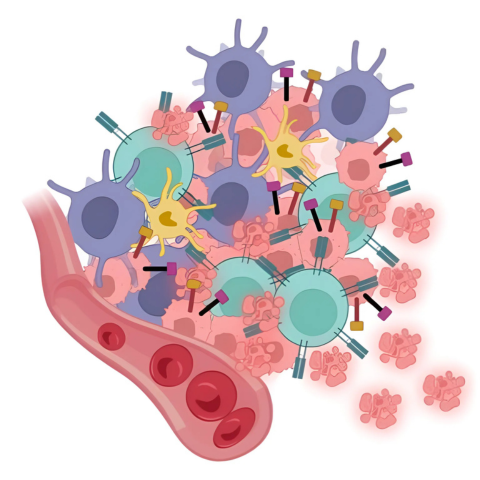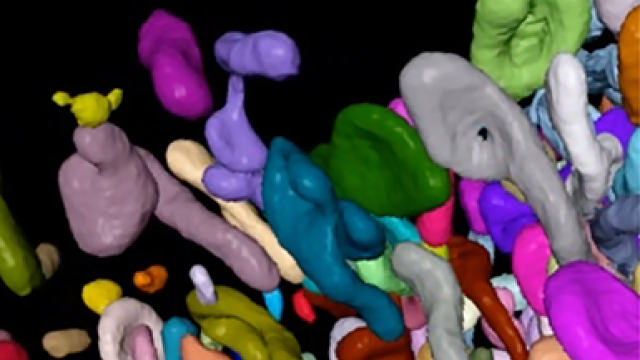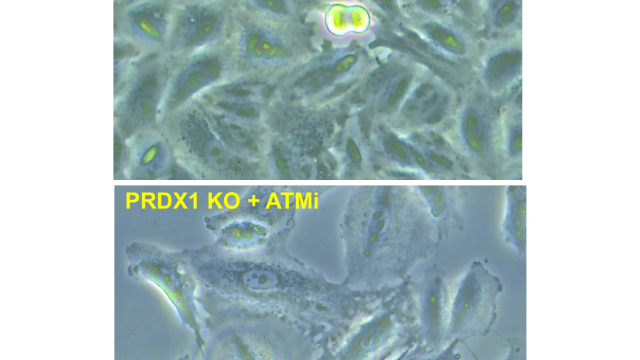
This image shows a small cluster of cancer cells that has spread from the primary tumor. When IMPACT is expressed in the (pink) tumor cells, the cells present more markers (gold/brown and magenta/black) on their surface, making them easier for the immune system to identify. This allows for more efficient tumor cell killing (shriveled pink cells) by NK cells (purple cells) and T cells (teal cells) following treatment with an immune checkpoint inhibitor, a type of immunotherapy.
CCR researchers have found a protein in cancer cells that helps make them easier to destroy with a type of treatment called immunotherapy. The findings of the study, led by Jonathan Hernandez, M.D., tenure-track investigator, and research fellow Surajit Sinha, Ph.D., of the Surgical Oncology Program, were reported in Cancer Discovery on July 31, 2025.
When cancer metastasizes, or spreads in the body, it becomes much more deadly for patients with solid tumors. Researchers have long sought to understand how cancer cells adapt to changing environments and avoid the immune system when they spread.
Hernandez and his team identified a protein called GCN1 that can trigger a stress response inside cancer cells and help them hide from certain immune cells. They also discovered another protein called IMPACT that can block GCN1. IMPACT not only interferes with the stress response but also activates the immune system to target and fight the cancer cells. Even though cancer cells stop making IMPACT due to changes in their DNA, the team found that making cancer cells produce IMPACT again helped another treatment called immune checkpoint inhibitor (ICI) therapy, kill pancreatic cancer cells in mice.
This study shows that IMPACT could be used as a therapy to make cancer cells more visible to the immune system, making it easier for the body to fight them. The team says their therapy may work for many types of aggressive solid tumors and help prevent the cancer from coming back.
Citation: Sinha S, et al. Cancer Discov. 2025 Jul 31. doi:10.1158/2159-8290.CD-24-1055. Online ahead of print.
Information provided by: Jonathan Hernandez, M.D.


